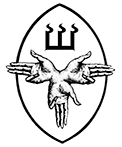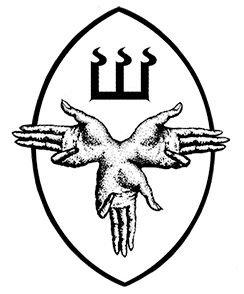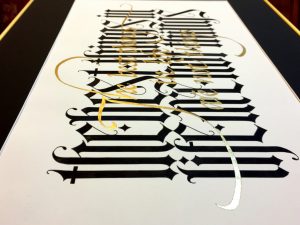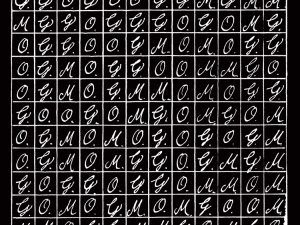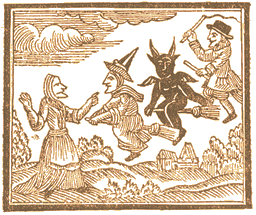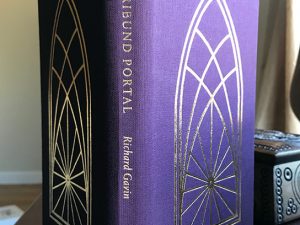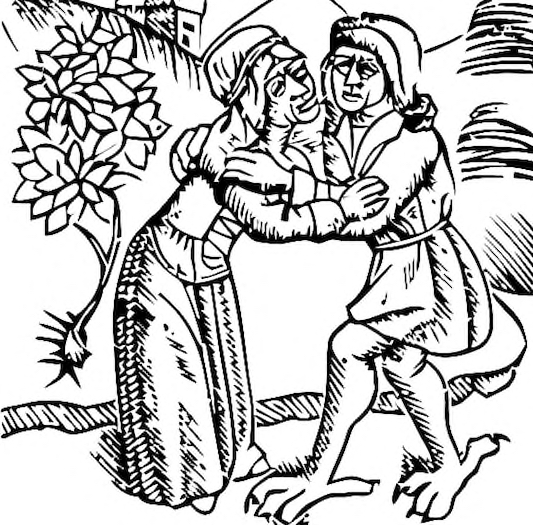
 DAS. Your new book The Wicked Shall Decay gathers together a number of rural British spells aimed at preventing, or gaining access to, malefic power. Although part of a much larger corpus of English sorcery, how common were such charms exemplifying acts of ‘defence’ or ‘protection’ whose structure mimicked the curse?
DAS. Your new book The Wicked Shall Decay gathers together a number of rural British spells aimed at preventing, or gaining access to, malefic power. Although part of a much larger corpus of English sorcery, how common were such charms exemplifying acts of ‘defence’ or ‘protection’ whose structure mimicked the curse?
ADM: There are a number of what you might call reversal spells to be found within the collection of spells, charms and incantations in my book. Some include such ideas as burning an object and saying an incantation that would send ‘X’ back to the sender. These spells use wording such as “As this burns may the evil depart from me, and return to him who sent it. May he slowly perish and wither away….” …having first set alight a bullock’s heart filled with 100 pins. Indeed, animal hearts feature quite regularly in defence spells, particularly against witches and Witchcraft. Another rather difficult reversal spell requires you to draw witches’ blood; I’m not sure how’d you do that without them noticing. Another operation not only removed the spell, it also revealed the ‘sorcerer’ who cast it. That would be very helpful in identifying one’s enemy.
RF. In the research compiled for the volume, how frequently did you find reference to the Devil?
ADM: The devil himself didn’t actually feature very much; it was more a case of protection from ‘evil spirits and demons.’ Of course there were many examples of accusations of contact, and contracts with the devil aimed mainly at witches, but little in the way of evidence and first-hand stories of any experiences. Spells for dispelling the devil appear in their own chapter in the book. One spell in particular really amused me:
If you meet the Devil you may either cut him in half with a straw or force him to disappear by spitting over his horns…
One can’t help thinking that must be one hell of a straw! Another interesting example directly related to the Devil is a version of Grace to be said if one is dining with his infernal majesty himself. This particular incantation is interesting because written down it looks like gibberish; it only makes sense when you read it aloud. The Devil also plays a part in the passing on of the ‘Horseman’s Word’ to the new initiate, where the young apprentice must shake the hand of what is referred to as the ‘Auld Chiel’ aka the Devil and thus swearing the oath of secrecy to protect the ‘word.’
DAS. As in America, the spellcraft of the English folk magic practitioner is syncretic, arising from varied magical, religious and folkloric streams. What influences are identifiable in the material you have collected?
ADM: by far the strongest influence was Christianity. As with folk magic in America, the idea that one could be a practitioner of magic and, at the same time, a ‘God fearing Christian’ was common. However, there are also examples of spells that can be linked to historic works on magic. Such titles include The Heptameron, Agrippa’s Three Books of Occult Philosophy and, although not actually named Scot’s Discoverie of Witchcraft. Although none of the spells mention this particular book, even a cursory comparison between the spells in the folklore books and those that can be found in ‘Discoverie’ show that they originate within Scot’s famous text. Other more obscure examples include the use of magic number squares and in one case the SATOR Square.
DAS. In consideration of the prevalence of Christian elements in these old charms and spells, what are some particular points of resonance between the dominant religion of England at the time and rural folk magic?
ADM: Many of the spells that are particularly designed to deal with malignant forces made use of Christian terminology. Particularly the ‘standard’ benediction ending (‘in the name of the father, the Son etc.’). This would appear either in English or Latin. Latin was an interesting choice. One reason for this would be because Latin was the ‘language of the Bible’, and of scholarship in general. However, it’s not exactly a popular language in rural Britain. Indeed, I’d imagine that the local vicar was probably the only person who would have been able to read it. Of course, it probably was precisely because it was the language of the Bible and therefore, in the mind of the parishioners, the language of God. Whatever the reason, Latin was quite common in spells designed to combat ‘darker forces.’ In addition to the benediction some spells include the ‘Lord’s Prayer’ said backwards, and other examples made use of other seemingly Latin words and phrases. However they’d become rather corrupted in terms of their grammar and spelling, thus making them essentially gibberish, but nevertheless, looking the part when written down.
RF. In The Wicked Shall Decay, there is a particular exorcism where the spirit Coronson is named. Have you found any further evidence as to its provenance and derivation?
ADM: Coronson is of course very close to the name Coronzom, the supposed ‘Mighty Devil’ – the demon of the abyss in Enochian magic. And as someone who is very interested in John Dee and Enochian I was extremely surprised to see the name included in this exorcism and did indeed hope I could discover more. There are slight differences in the spelling but it’s too close to me a mere coincidence.
The actual exorcism itself comes from County Folklore of The East Riding of Yorkshire by Mrs. Gutch, however Gutch records that the exorcism had already appeared in print and can be found in a book entitled A History of Barmby Moor by Rev. W.D. Wood Rees published in 1911. Indeed, the actual entry in Gutch’s book has been lifted in its entirety from Wood Rees’ book and is therefore identical. Gutch via Wood Rees lists the source material as being taken from ‘The Wise Man of Barmby, George Wales’ as he described in the entry. Little information about George Wales is given other than that he was born in 1786 and died in 1860. Wales is recorded as being a ‘stanch Churchman’ and not in league with the Powers of Darkness. Wood Rees also mentions that the exorcism was copied from Wales’ own book of charms, which is far more likely to be something handwritten by Wales and not a book which he’d had privately printed.
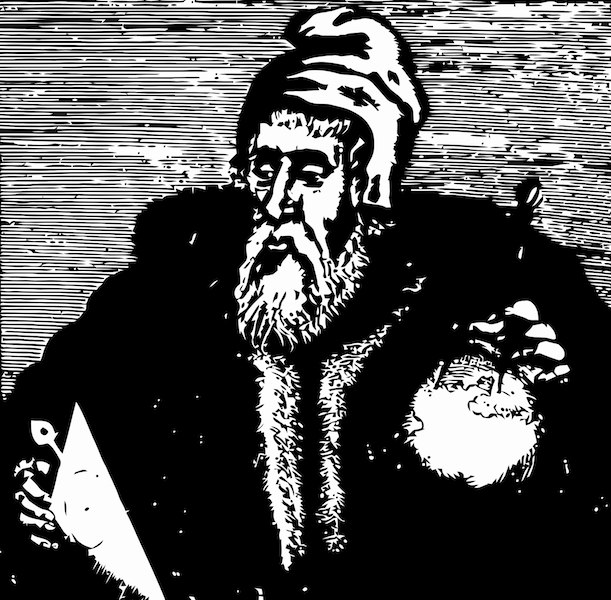 Elsewhere Gutch, via Wood Rees, states that Wales was in possession of a copy of Agrippa’s Occult Philosophy from “which he seems to have copied many other cures.” This would certainly suggest that Wales was a competent reader and able to comprehend complex texts. It’s interesting to note that Agrippa’s book was sold from a location close to St. Paul’s Cathedral London. This is significant as the only printed edition of John Dee’s Enochian experiments The True and Faithful Relation of what passed between Dr John Dee and some Spirits was sold from a Doorway at the very same St. Paul’s Cathedral. Also Agrippa’s book first appeared in English in 1651 just two years after ‘True and Faithful Relation’ was published in 1649. As George wasn’t to be born for another 140 years it’s not possible that he’d purchased the books but it is certainly possible that an ancestor did and that both books were passed down the George. Although George himself was from Barmby we’ve no idea where is family may have originated from.
Elsewhere Gutch, via Wood Rees, states that Wales was in possession of a copy of Agrippa’s Occult Philosophy from “which he seems to have copied many other cures.” This would certainly suggest that Wales was a competent reader and able to comprehend complex texts. It’s interesting to note that Agrippa’s book was sold from a location close to St. Paul’s Cathedral London. This is significant as the only printed edition of John Dee’s Enochian experiments The True and Faithful Relation of what passed between Dr John Dee and some Spirits was sold from a Doorway at the very same St. Paul’s Cathedral. Also Agrippa’s book first appeared in English in 1651 just two years after ‘True and Faithful Relation’ was published in 1649. As George wasn’t to be born for another 140 years it’s not possible that he’d purchased the books but it is certainly possible that an ancestor did and that both books were passed down the George. Although George himself was from Barmby we’ve no idea where is family may have originated from.
I do go into a lot more detail with regards to the possible origins of what I’ve dubbed ‘The Coronzom Exorcism’ in an article for issue volume 3 of the WYRD Journal from Three Hands Press.
RF. The old rite of ‘The Passing on of Power’ appears in your book. How many examples of this ritual have you found?
ADM: Actually very few. The books I consulted offered no real suggestion as to how any of this knowledge was passed on, indeed I don’t think the compilers of the Folklore Society books saw these spells and charms as anything more than curios and nonsense, and not all that interested in the question of transmission of knowledge. The closest I found was the passing on of the previously mentioned ‘Horseman’s word’, which was certainly seen as something demonic to outsiders at least. It was more of a mockery of sacred Christian rites than it was anything truly ‘diabolical’ and seemed more like a form of ‘low brow’ freemasonry. It is clear though that while the ritual itself seems less than fully serious, those who partake of the oath take it very seriously.
DAS. It’s clear from the original spells you have collected in Wicked that they were dead serious about their intents as well as the necessity for strict adherence to procedural integrity. What does this suggest about the motives for preservation and transmission of such magical procedures, and how is this motivation different today?
ADM: Firstly, I would say that it was their unquestioning belief that the magic contained in these spells is actually effective, and that they know that ‘courting’ with such powers could put their mortal souls in jeopardy, so they knew that they had to performed in the correct manner, or fear the consequences. That is a rather long-winded way of saying they feared getting it wrong because they believed it worked. It is also clear that they valued these spells and incantations highly and believed that they contain genuine supernatural power. These spells and charms where not to fool people or the trick them, there is an undoubted belief the effect was real.
I think in these days we are more likely to question and explore such operations to discern how they may actually work. In more modern times we are respectful, both of the traditions and the methodology, however we’re not so wedded to the notion of following everything ‘step by step’ therefore new approaches are developed and new ideas explored. While we might be more inquisitive as to the nature of the operations, our processors would probably say “It works, why mess with what works?”
RF. Many farmers and rural folk utilized celestial cycles such as moon phases in their planting and spell-craft. How common are such practices in the folklore you have studied?
ADM: There are examples recorded in the more modern writings of George Ewart Evans in his various books on rural history and customs, but very little in the books I looked at. There were a number of instances where the folklorists described what particular moon phases meant, such as a crescent moon with ‘horns up’ indicated fine weather. Also how ‘Women go out of doors and turn their aprons before the new moon. They then wish something without telling their wish to anybody.’ Or The first new moon of the year must not on any account be looked at ‘through glass’ – something that would be pretty much impossible today. There are also examples of strange occurrences which only happened under the light of the moon. Examples included sights of ghost and fairies. Indeed, there seems to be a strong link between a full moon and fairy sightings as descriptions of such sightings could be found in a number of books. There are examples of spells that took into account the moon but none of them of them featured in The Wicked Shall Decay as they were for benign problems like curing warts and the ever present and entirely uninteresting question of who one is going to marry! Indeed, one could easily compile an entire book on spells to see one’s true love or whom to marry. etc.
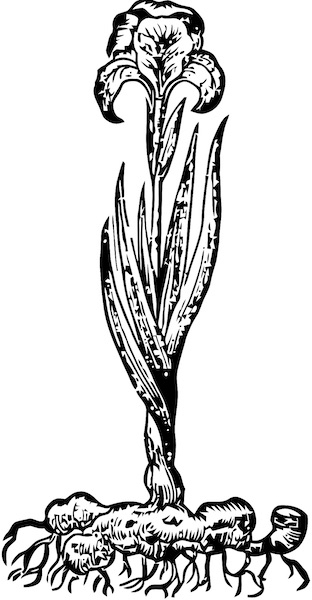 DAS. In your present collection of spells one notes the presence of herbs, often as adjuncts to the operation, but sometimes occupying a central magical role. Considering the time period you studied, what were the most important plants in use by the British folk magic practitioner?
DAS. In your present collection of spells one notes the presence of herbs, often as adjuncts to the operation, but sometimes occupying a central magical role. Considering the time period you studied, what were the most important plants in use by the British folk magic practitioner?
ADM: There is no doubt about the importance of ‘plant power’ in many of the spells and incantations and not just herbs, an obvious adjunct to many of the charms listed. Indeed, trees are also present such as Hazel and Hawthorn. Of the easily recognisable herbs, commonly seen in magic, we find Vervain and Heather. And some now fully recognised and having medicinal qualities are also included. In particular St. John’s Wort, now known to help with depression and sleep problems. In one instance it plays a part in driving away evil spirits, although in this particular spell suggests you hang it in a jar at the window. St. John’s Wort can apparently “drive away all mental afflictions” if placed in a Silken bag and warn around the next. No suggestion is made for ingesting it, which is how it would actually work, but it still shows that these rural practitioners recognised that it had important and effective qualities.
RF. Were you able to locate any handwritten books of spells and receipts during the research process for The Wicked Shall Decay? If so, what kinds of material comprised them?
ADM: To use an old English phrase ‘I would have given my eye teeth’ to have direct access to a hand-written spell book that came directly from the time frame I was working with (pre-1930) but unfortunately not. I have certainly seen more modern versions from people I know, however they are their own collections drawn from various sources, including older documents, but nothing genuinely historic. It is, of course, possible that one or two people could ‘construct’ their own handwritten spellbooks that would have historic validity by copying out the spells in my book The Wicked Shall Decay. At least they’d know that the spells were real!
†
